Building Code Reminders
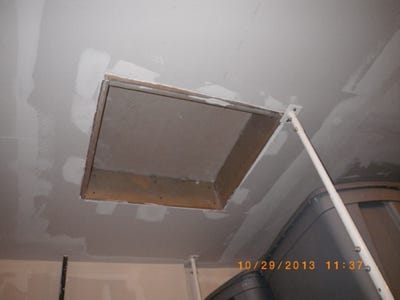
SPS 321.07 Attic and crawl space access.
(1) Attic. Attics with 150 or more square feet of area and 30 or more inches of clear height between the top of the ceiling framing and the bottom of the rafter or top truss chord framing shall be provided with an access opening of at least 14 by 24 inches, accessible from inside the structure.
(2) Crawl spaces. Crawl spaces with 18 inches of clearance or more between the crawl space floor and the underside of the house floor joist framing shall be provided with an access opening of at least 14 by 24 inches.
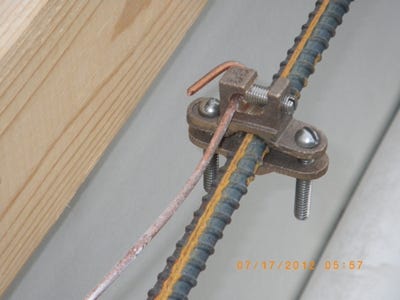
Code reference: NEC 250.52(A)(3)(2)
If a concrete encased electrode is available then it must be used. This is a new construction, and the concrete encased electrode exists, and should be attached to the grounding electrode system. In cases where there is a concrete encased electrode present, but not connected, it is allowable to install another concrete encased electrode since the last sentence of 250.52(A)(3)(2) states that where more than one concrete encased electrode is present it shall be permissible to bond only one into the grounding electrode system. They can dig down besides the footing and add a ufer ground that would consist of at least 20’ of rebar 1⁄2” in diameter or larger and encased in at least 2” of concrete
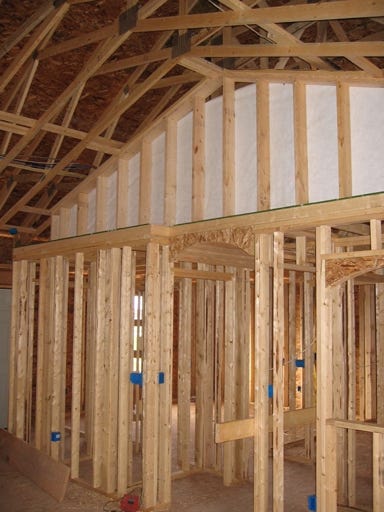
SPS 322.21 Protection of insulation.
(2) Wind wash protection. (Attic knee walls)
(a) Except as provided under s. SPS 322.39 (4) for cathedral ceilings, all air-permeable insulation materials installed in any position other than horizontal, shall be covered on the cold-in-winter side with a permanently attached material of low air permeability to maintain the R-value of the insulation.
Note: Suitable materials for this purpose include house wrap permanently attached with batten strips, asphalt-impregnated felt or tar paper, plywood, oriented strand board or OSB, siding material, rigid insulation sheathing, etc.
(b) If non-rigid sheet material is used, it shall be water vapor permeable.
Note: Water vapor permeable materials for this purpose include house wrap permanently attached with batten strips and asphalt-impregnated felt or tar paper.
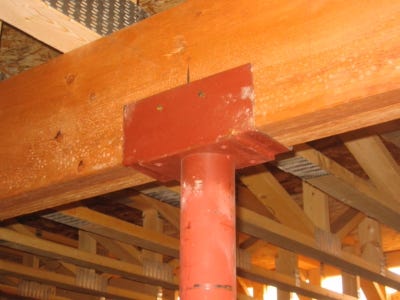
SPS 321.22(3) Girders and beams.
(a) Girders and beams shall be selected from Table 321.22-A1 or Table 321.22-A2 or shall be designed through structural analysis.
(b) Wood girders and beams shall be fitted at the post or column. Adjoining ends shall be fastened to each other to transfer horizontal loads across the joint. Beams shall also be fastened to the posts with framing anchors, angle clips, or equivalent.
(c) Where intermediate beams are used, they shall rest on top of the girders; or shall be supported by ledgers or blocks fastened to the sides of the girders; or they may be supported by approved metal hangers into which the ends of the beams shall be fitted.
(d) Lateral restraint for all wood beams shall be provided at all columns using a saddle or other approved connection where the beam meets one of the following conditions:
1. The beam is not restrained at both ends.
2. The beam is more than 11.25 inches deep using actual measurement.
Note: A saddle supports the beam on the bottom and allows for the through-connection of fasteners into the side of the beam.
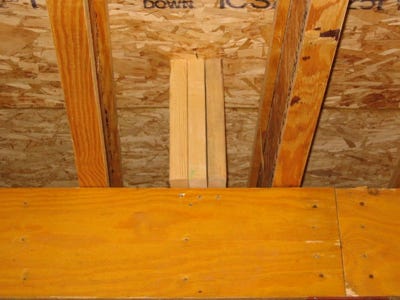
Use of Blocking Panels and Squash Blocks
Blocking panels are used for lateral restraint of the joist (to keep the ends moving from side to side), to transfer load from above around the joist or for shear wall nailing from above.
Squash blocks are used to transfer load from above around the joist. Failing to install either component, doing so incorrectly, installing them when not needed, putting them in the wrong place or mixing up the two can mean a floor system incapable of managing loads and performing as designed.
For guidance on when and where to install blocking panels and squash blocks for TJI joists, Click Here “Installation Guide for Floor and Roof Framing”